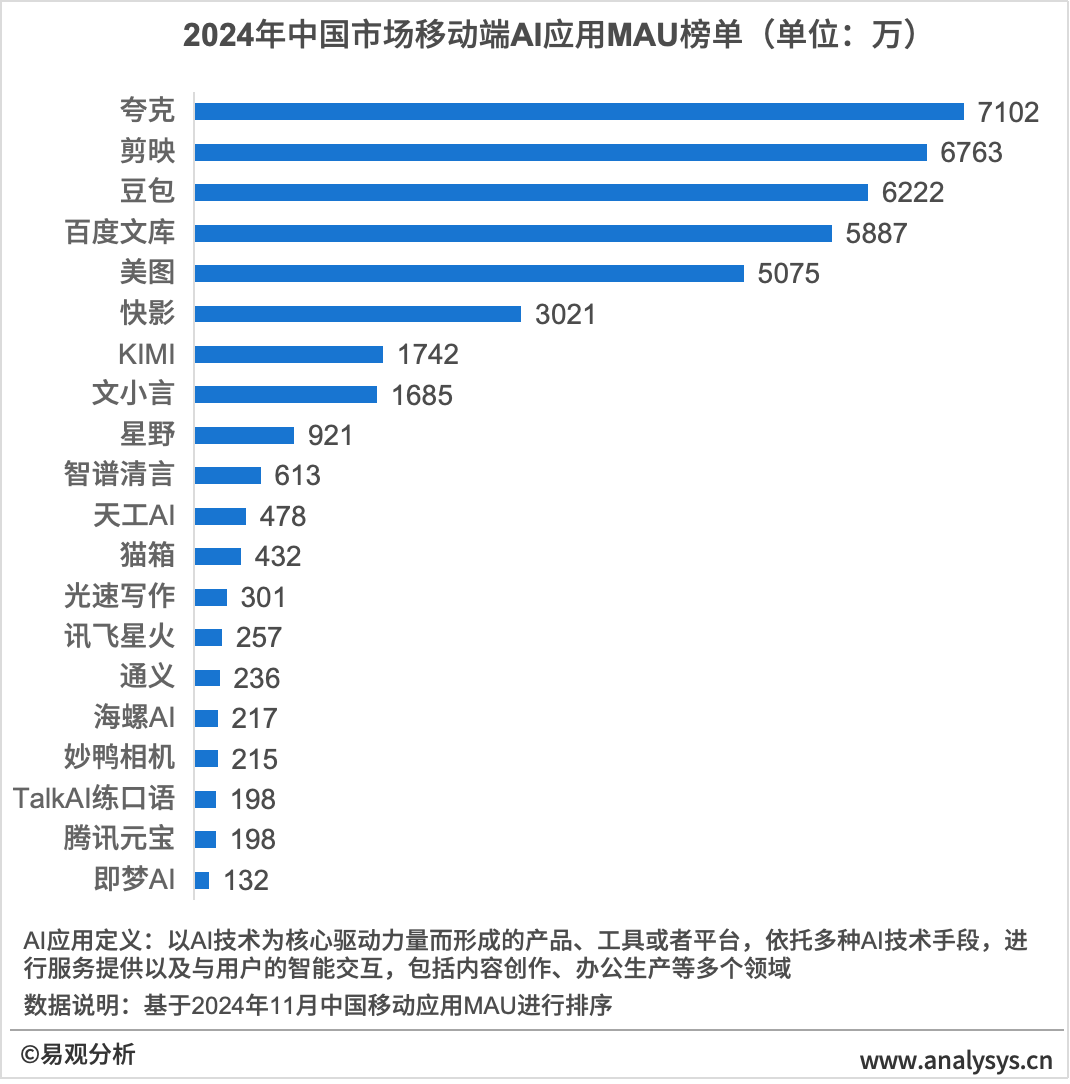Two Years After AI's Boom, 99% Can't Distinguish 'AI Applications' from 'Applying AI': Are You in the Trap?
![]() 07/07 2025
07/07 2025
![]() 437
437
ChatGPT's emergence marked the 'iPhone moment' of the AI era, propelling machine learning to new heights. Subsequently, ChatGPT evolved from a text-based tool to a multimodal application encompassing computer vision, speech interaction, and multimedia. The rise of AI Agents and various 'assistants' further revolutionized human-computer interaction. As technological breakthroughs must translate into real-world applications, the commercialization of AI applications has garnered significant attention.
However, despite this progress, large models have yet to yield any groundbreaking AI applications. Why is this so? Yesterday, I engaged in a dialogue with a prominent expert in the industry's secondary market, and his insights shed light on the current state of AI application development.
"Is it an AI application or merely applying AI? Who will foot the bill for this product?"
AI Applications vs. Applying AI
Let's first clarify these two concepts:
AI Applications involve transforming AI technology into standalone products. In essence, it's about creating novel AI-driven solutions.
Applying AI, on the other hand, entails enhancing existing applications with AI capabilities to improve user experience.
According to the expert, most scenarios call for applying AI, with only a handful of scenarios, where there are willing customers, being suitable for dedicated AI applications.
Why Are Most Scenarios Applying AI?
From a scenario perspective, the mobile internet has matured, with existing products and applications largely meeting people's needs across various domains. AI applications primarily enhance the experience and efficiency of these existing mobile internet applications. Today's mobile internet products have evolved into comprehensive online and offline service systems.
For instance, many AI-powered cultural tourism products can assist with itinerary planning, but they can't book flights, hotels, or tickets due to a lack of nationwide resource integration. In contrast, a platform like Ctrip, if it integrates AI, can not only plan but also book all related services, including transportation, accommodation, and attraction tickets.
Therefore, creating an AI application necessitates building the infrastructure capabilities of mobile internet products. Otherwise, it won't address users' fundamental needs. AI applications face two options: collaboration or starting from scratch. However, large companies that control customers, data, and service systems often prefer to go it alone. Why would they partner with a startup? Rebuilding everything from scratch is largely impractical.
From a cost perspective, if an AI application were to replicate a mobile internet product and service system, it wouldn't have any cost advantage.
The primary costs stem from data and customer acquisition:
AI applications starting from scratch require vast scenario data to optimize models, including costly data cleaning and annotation.
For new AI application products, customer acquisition costs are also substantial, regardless of the method used.
Conversely, those applying AI already possess data and customers, eliminating the need for additional expenditures. These funds can instead be invested in AI upgrades. The cost difference is substantial, especially considering that the original products of those applying AI have consistent cash flow, providing a sense of security.
In the 2024 China mobile AI application MAU ranking, the top six are all leaders in applying AI.

Some might argue that startups, with their flat organizational structure and swift decision-making, can rapidly adapt to market changes. Innovative ventures within large companies, however, may face 'limited attention from superiors' and 'resource competition constraints', potentially hindering their performance.
It's not that AI applications lack opportunities; they just need to steer clear of large companies' dominant positions and scenarios where the economics don't add up.
AI Applications with Willing Customers
To succeed, an AI application must lead to commercialization. Without willing customers, it won't go far. Therefore, we must focus on scenarios where large model capabilities can significantly enhance customer experience, improve efficiency, and reduce costs.
For example, AI-driven financial risk management is crucial for credit businesses. Large AI models can now detect various types of loan fraud, such as identity theft, gang fraud, and fraudulent applications. By bolstering risk management capabilities with AI, banks can reduce bad debt rates, and if you help them save a billion, they'll be willing to pay you a hundred million.
Another example is AI-powered drug discovery. Traditional drug development follows the 'double-ten rule'—an average of 10 years and $1 billion spent, with particularly inefficient target discovery and molecular screening. AI's ability to simulate molecular interactions at the atomic level enables precise screening of the most promising molecules for synthesis, resulting in molecules with excellent indicators, significantly shortening the R&D process and accurately identifying the most viable candidates. With new drug development worth billions, pharmaceutical companies are definitely willing to invest in improving efficiency and reducing costs.
Whether it's AI applications or applying AI, the ultimate goal is to create value for users and convince them to pay for that value.








